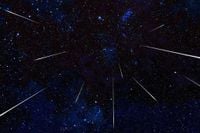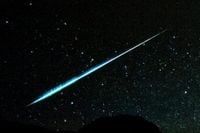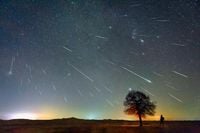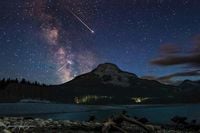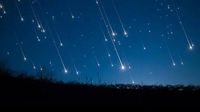The annual Lyrid meteor shower is currently captivating skywatchers, with its peak expected on April 22, 2025. Known for its dazzling display, the Lyrids promise a spectacular show, delivering up to 20 meteors per hour under clear conditions. This celestial event is a welcome sight for stargazers, especially following a long stretch without meteor showers during the winter months.
The Lyrid meteor shower has been observable since April 16, 2025, and will continue until April 25, 2025. The peak night, set for April 21 into the early hours of April 22, is when the most meteors will be visible. NASA's Langley Research Center noted that the meteors appear to radiate from the northern constellation Lyra, near the bright star Vega. “The Lyrid meteor shower is set to light up the night,” the center posted on X, emphasizing the event's potential for celestial spectacle.
The Lyrids owe their brilliance to Comet C/1861 G1 Thatcher, which orbits the Sun approximately every 415 years. As Earth passes through the debris trail left by this comet, tiny particles burn up in our atmosphere, creating vibrant streaks across the sky. This year, viewers are in luck as the Moon will be in its waning phase, minimizing its light pollution and enhancing visibility of the meteors.
For those hoping to catch a glimpse, the best viewing time is during the pre-dawn hours. The Natural History Museum advises, “It might take a while for your eyes to adjust to the darkness so be patient. You might not see meteors right away so get comfy with a blanket and watch the sky for at least an hour.”
While the Lyrids typically produce about 10 to 20 meteors per hour, under ideal conditions, observers could witness up to 100 meteors. The meteors travel at an impressive speed of about 49 kilometers per second, making for a thrilling viewing experience.
As the Lyrid meteor shower unfolds, it's important to find a location far from city lights to enhance visibility. The less light pollution, the better the viewing experience. Dr. Shyam Balaji, a researcher in astroparticle physics and cosmology at King’s College London, suggests that viewers should lie back and look up, as meteors can appear anywhere in the sky, not just near their radiant point.
For the best experience, experts recommend giving your eyes time to adjust to the darkness, which can take around 20 to 30 minutes. Additionally, no telescopes or binoculars are needed; in fact, they can obstruct the view of the long fiery trails left behind by the meteors.
Interestingly, the Lyrids are one of the oldest recorded meteor showers, with observations dating back over 2,600 years to ancient Chinese astronomers. They are known for their bright and fast meteors, often leaving glowing trails that can linger for several seconds.
After the Lyrids, skywatchers can look forward to the Eta Aquarids meteor shower, which will peak on May 5-6, 2025, promising an even more active display with up to 40 meteors per hour. The Eta Aquarids are associated with Comet Halley, further enriching the stargazing calendar.
As the peak of the Lyrid meteor shower approaches, excitement builds among astronomy enthusiasts and casual observers alike. Whether you’re a seasoned stargazer or a first-time viewer, this celestial event offers a unique opportunity to connect with the universe. So grab a blanket, find a dark spot, and prepare to be amazed by the wonders of the night sky!

